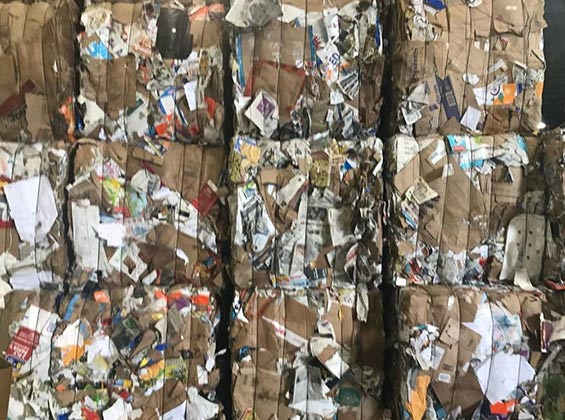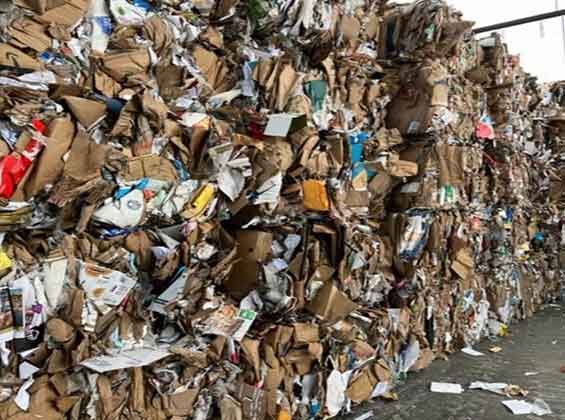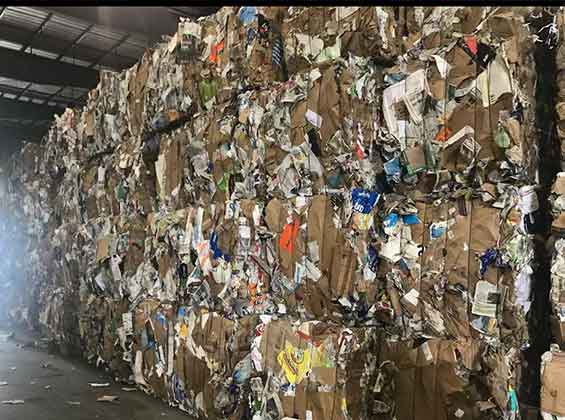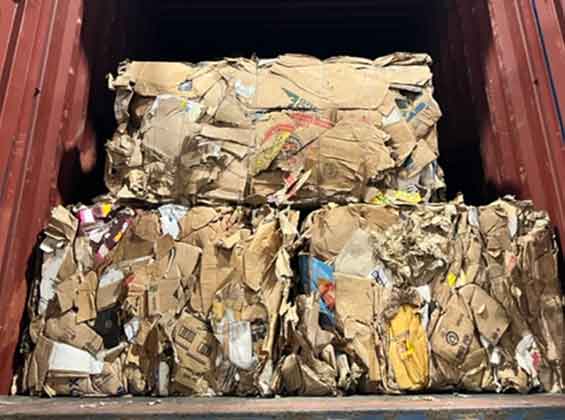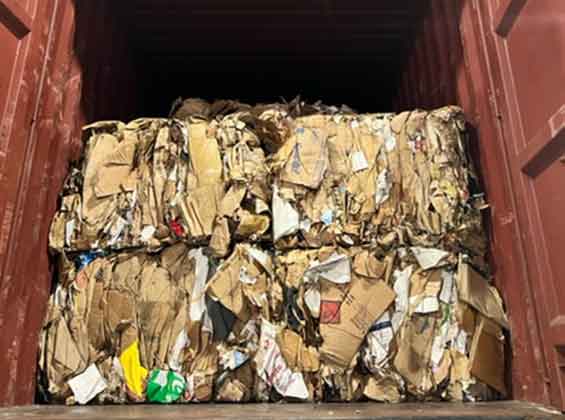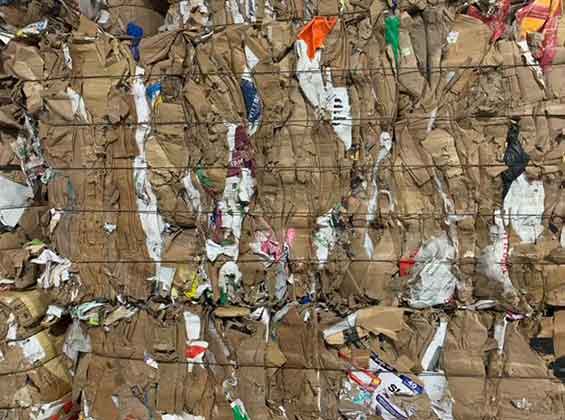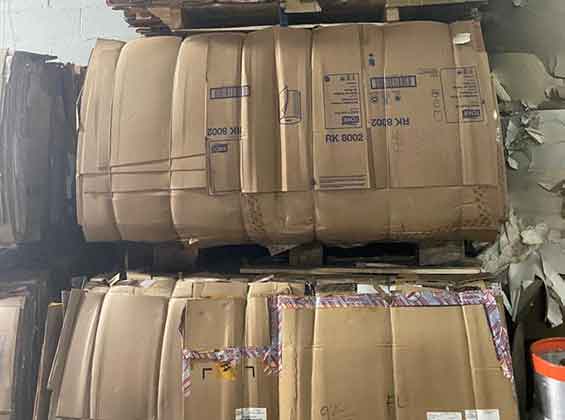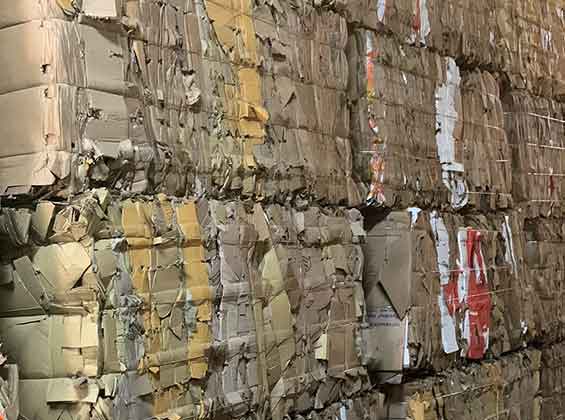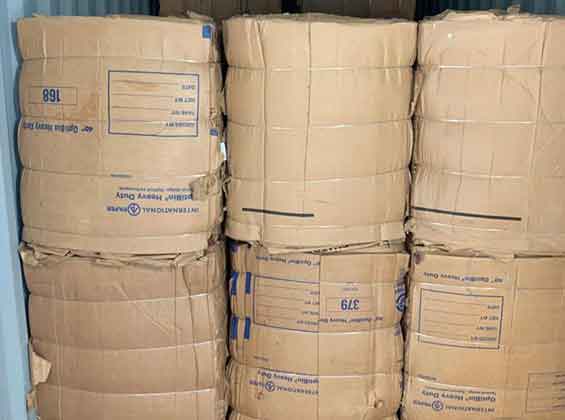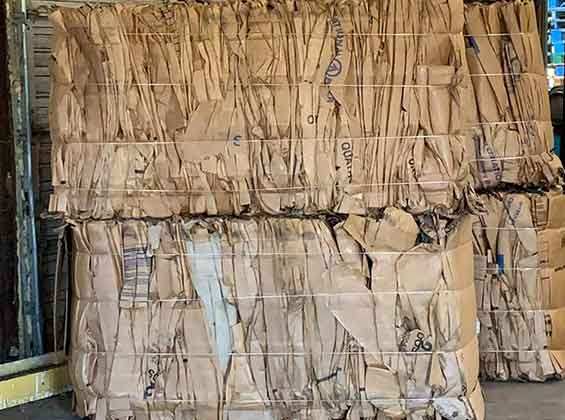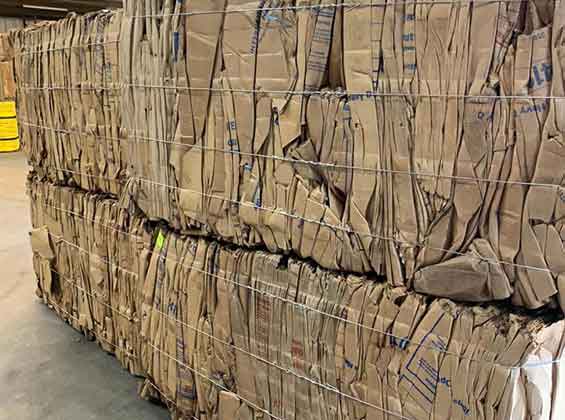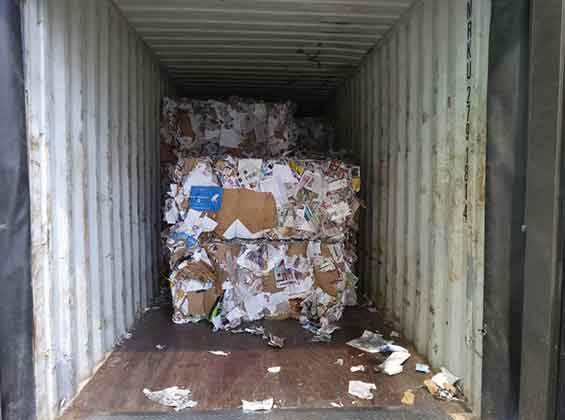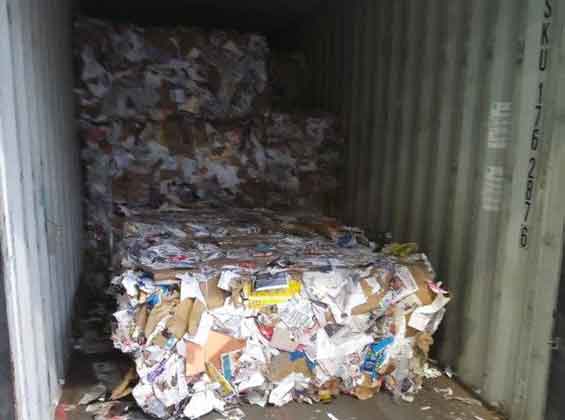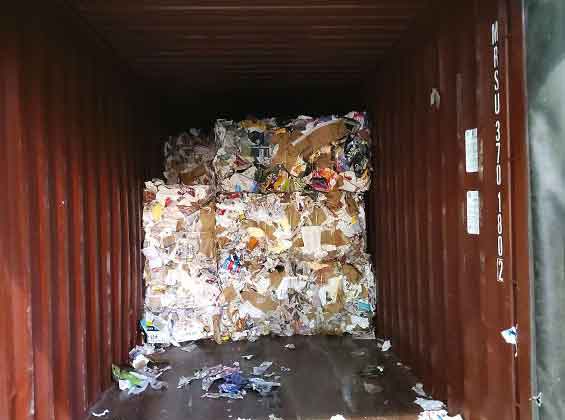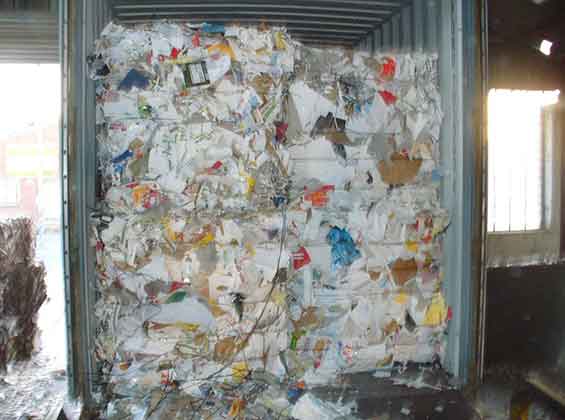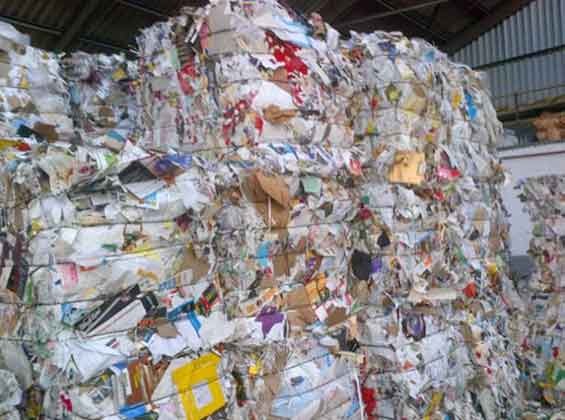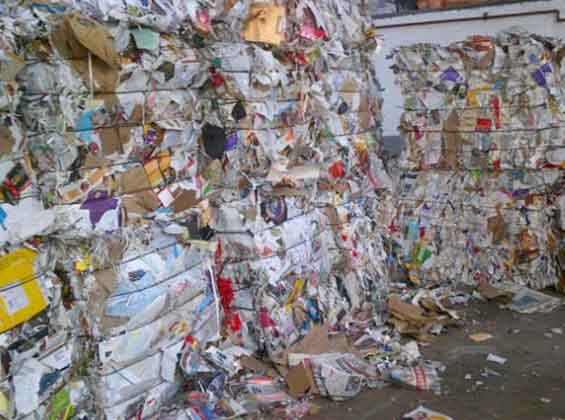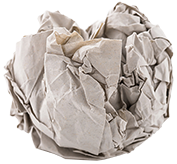
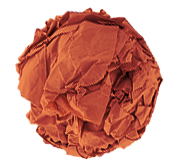
OCC # 11
Consists of corrugated containers having liners of either test liner or kraft.
Prohibitive Materials may not exceed 1%
Outthrows plus prohibitives may not exceed 5%
Printed or unprinted, flattened or compacted corrugated containers which are made of two sheets of linerboard sandwiching a layer of fluting to make what is commonly referred to as a “cardboard box.” Materials likely to have been exposed to unacceptable contaminants must not be used.
OCC # 11.5
Consists of corrugated containers having liners of either test liner or kraft.
Prohibitive Materials may not exceed 1%
Outthrows plus prohibitives may not exceed 5%
Printed or unprinted, flattened or compacted corrugated containers which are made of two sheets of linerboard sandwiching a layer of fluting to make what is commonly referred to as a “cardboard box.” Materials likely to have been exposed to unacceptable contaminants must not be used
OCC # 12 ( DSOCC )
Consists of double-sorted corrugated containers, gener-ated from supermarkets and/or industrial or commercial facilities, having liners of test liner or kraft. Material has been specially sorted to be free of boxboard, off-shore cor-rugated, plastic, and wax.
Prohibitive Materials may not exceed 1/2 of 1%
Outthrows plus prohibitives may not exceed 2%
INDUSTRIAL BOX ( DSOCC PREMIUM )
Consists of double-sorted corrugated containers, generated from supermarkets and/or industrial or commercial facilities, having liners of test liner or kraft. Material has been specially sorted to be free of boxboard, off-shore corrugated, plastic, and wax.
OCC 80/20 ( CANADA )
Consists of corrugated containers having liners of either test liner or kraft.
Prohibitive Materials may not exceed 1%
Outthrows plus prohibitives may not exceed 5 - 7 %
HARD MIX
Paper materials that are commonly used for packing electronic goods such as refrigerators and televisions, are afterwards throwed away by the consumers, which results in generating a large volume of waste paper materials.
SOFT MIX
Soft mixed papers for recycling are made up of sorted and clean paper types of various quality including type of fiber. Soft mixed papers for recycling include clean and sorted papers of differing qualities that have less than 10% groundwood.
NDLK ( New Double-Lined Kraft Corrugated Cuttings )
Consists of new corrugated cuttings having liners of either test liner or kraft. Treated medium or liners, insoluble adhe-sives, butt rolls, slabbed or hogged medium, are not accept-able in this grade.
Prohibitive Materials None permitted
Outthrows plus prohibitives may not exceed 2%
Fiber Cores
Consists of paper cores made from either recycled paper-board and/or linerboard, single or multiple plies. Metal or plastic end caps, wood plugs, and textile residues are not acceptable in this grade.
Prohibitive Materials may not exceed 1%
Outthrows plus prohibitives may not exceed 5%
Carrier Stock
Consists of printed or unprinted, unbleached new beverage carrier sheets and cuttings. May contain wet strength addi-tives.
Prohibitive Materials None permitted
Outthrows plus prohibitives may not exceed 1%
Kraft Grocery Bag (KGB)
Consists of new brown kraft bag cuttings, sheets and mis-print bags.
Prohibitive Materials None permitted
Outthrows plus prohibitives may not exceed 1%
New Kraft Multi-Wall Bag
Consists of new brown kraft multi-wall bag cuttings, sheets, and misprint bags, free of stitched papers.
Prohibitive Materials None permitted
Outthrows plus prohibitives may not exceed 1%
SRPN ( NEWS # 56 )
Consists of sorted newspapers, mail, magazines, printing and writing papers and other acceptable papers generated from residential programs (such as residential household and apartment collections and drop-off centers) sorted and processed at a recycling facility. Containerboard and brown grades (OCC, Kraft bags, boxboard and Kraft carrier board) will be considered as “Outthrows.” Due to some technical questions, a clarification to the language above was made in August 2019.
Prohibitive Materials may not exceed 2% Outthrows may not exceed 3%
